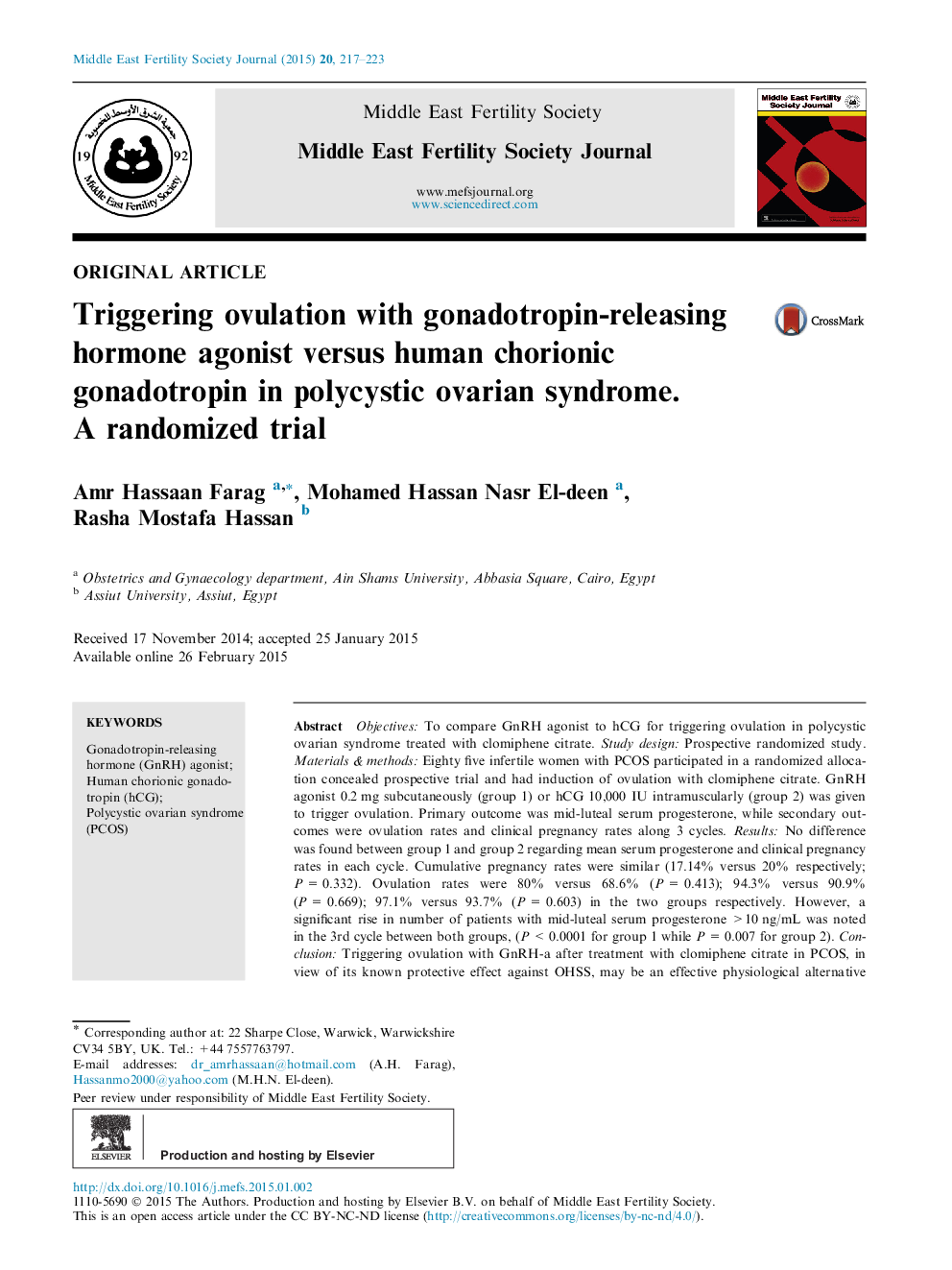| Article ID | Journal | Published Year | Pages | File Type |
|---|---|---|---|---|
| 3966078 | Middle East Fertility Society Journal | 2015 | 7 Pages |
Objectives: To compare GnRH agonist to hCG for triggering ovulation in polycystic ovarian syndrome treated with clomiphene citrate. Study design: Prospective randomized study. Materials & methods: Eighty five infertile women with PCOS participated in a randomized allocation concealed prospective trial and had induction of ovulation with clomiphene citrate. GnRH agonist 0.2 mg subcutaneously (group 1) or hCG 10,000 IU intramuscularly (group 2) was given to trigger ovulation. Primary outcome was mid-luteal serum progesterone, while secondary outcomes were ovulation rates and clinical pregnancy rates along 3 cycles. Results: No difference was found between group 1 and group 2 regarding mean serum progesterone and clinical pregnancy rates in each cycle. Cumulative pregnancy rates were similar (17.14% versus 20% respectively; P = 0.332). Ovulation rates were 80% versus 68.6% (P = 0.413); 94.3% versus 90.9% (P = 0.669); 97.1% versus 93.7% (P = 0.603) in the two groups respectively. However, a significant rise in number of patients with mid-luteal serum progesterone >10 ng/mL was noted in the 3rd cycle between both groups, (P < 0.0001 for group 1 while P = 0.007 for group 2). Conclusion: Triggering ovulation with GnRH-a after treatment with clomiphene citrate in PCOS, in view of its known protective effect against OHSS, may be an effective physiological alternative to conventional hCG without compromising luteal function and pregnancy rates after repeated cycles of treatment.
